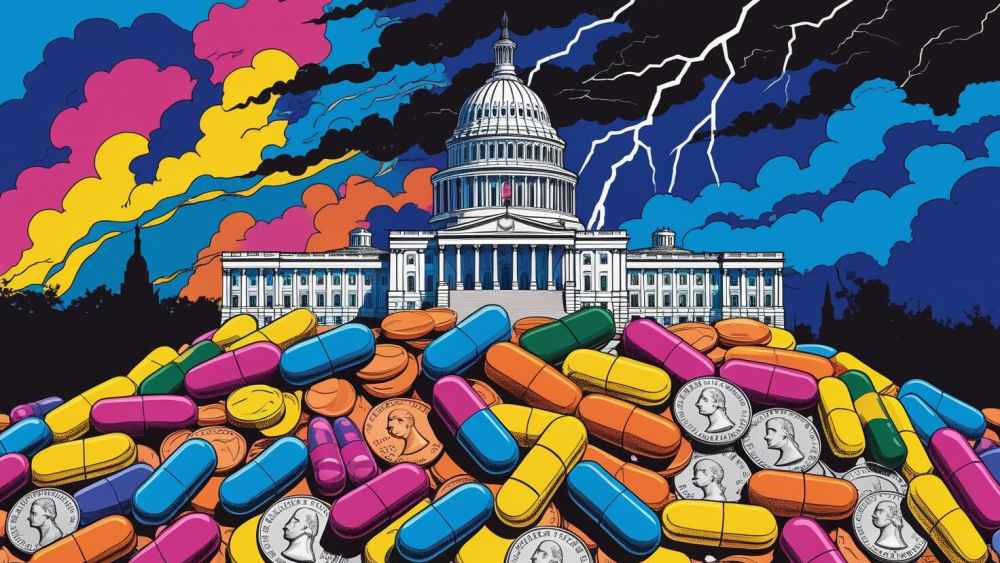Top 10: 2009 In Review
Some folks may have the decency to wait until the year actually ends to look backward. Not I. It’s time for the second annual Biopharm Executive Top 10 Year in Review list, and I’m not going let a few remaining days in December get in my way. So once again, here’s my entirely subjective list of the stories and trends that I think most shaped the industry in 2009. Without further ado...
#10 Big Pharma Goes to China! While many big pharmas have a marketing presence in China and sometimes conduct clinical trials there, companies have only recently gotten serious about making China and other parts of Asia a base for research and a place to build a brand with local roots. Novartis led the way this year with a $1 billion plan to build its research presence, but Bayer, GlaxoSmithKline, and AstraZeneca are rapidly expanding their R&D presence in the region. Roche just recently announced it would be moving some of its research to Asia, too, and I don’t think we’ve seen the end of this trend.
#9 Options Deals. These aren’t new, but in the midst of a financial crisis, “show me” deals have become more popular than ever. There a numerous examples that took place during the year, although GlaxoSmithKline was particularly fond of them. The basic idea: Pay a little bit now to have the option, at a later date, to license a product at a pre-agreed price. It limits bidding wars, keeps prices down (presumably), shares the risk, and lets innovator companies raise money on programs that would be too early to attract a major deal. We’ll be seeing more of these.
#8 H1N1. This was clearly a huge story in 2009, but it’s hard to guess how history will look back on it. Will we remember the rapidity with which vaccines were developed and approved? Or the painfully slow rate at which they were manufactured and distributed? Will we admire the quick response of many health organizations to the pandemic threat? Or will the growing murmurs that the danger of the illness was exaggerated win the day? If nothing else, it was a good drill for a more deadly pandemic to come.
#7 Mega-mergers. This past year saw three deals that topped over $150 billion in combined value. Wy/Pfi (the combination of Pfizer and Wyeth) tops the list, but there’s also Merck and Schering-Plough and Roche’s acquisition of the remainder of Genentech. I’m not sure if this really signals a major new wave of big pharma consolidation, as some have suggested. But it is already the biggest wave we’ve seen since the round at the beginning of the decade, and its effects will continue to be felt across the life sciences industry.
#6 Jobs keep disappearing. Sure, the recession is officially over, at least according to the bean counters at the National Bureau of Economic Research, and the stock market is back at pre-meltdown levels, but the country feels more have- and have-not than ever. Pharma and biotech companies are dealing not only with the weak economy, but mega-mergers (see above) and a continuing storm of generic competition. As a result, 2009 will be only slightly less awful than 2008 when it comes to job losses. We keep being told employment is a lagging indicator of economic health, but it’s going to be a long time before those lost jobs are replaced. My biggest hope is that lending and investing picks up enough to let some talented former industry employees create the next great wave of companies.
#5 PhRMA Makes a Deal. Healthcare reform may turn out to be the biggest story...or the biggest flop...of 2009 and of Obama’s presidency, but it looks like we won’t know until 2010. What we do know is that the pharmaceutical industry came up with a radical new approach to how it dealt with the threat of reform: It played nice. PhRMA offered what it says is $80 billion in concessions, and for this sum (which is really an investment in expanding its markets) it got to be viewed as a good faith partner. And when a reimportation bill again reared its hand? Poof! Gone.
#4 Risk Mitigation’s Unintended Consequences? Few biotech and pharma execs are excited about FDA’s new requirements on Risk Evaluation and Mitigation Strategies (REMS)--it’s just another layer of regulatory burden and another potential limitation on market size. But what if a clever REMS strategy can also be used to extend a drug’s exclusivity, thwart generics, and even pave the way to off-label promotion? That’s probably not what FDA has in mind, but we’ve only begun to watch this story evolve.
#3 Biogenerics finally (almost) arrive. Whether new legislation on follow-on biologics becomes reality depends on the fate of the larger healthcare reform package it is attached to. But getting a palatable bill this far is already a victory--for the Biotechnology Industry Organization, which pretty much got everything it wanted, over the objections of the Federal Trade Commission and the Obama Administration. Genentech even got quite a few members of Congress from both parties to spout their rhetoric verbatim when it came to supporting a common vision of biosimilars regulation. It seems we’ve reached a workable compromise.
#2 Blurring the generic line. Hey, why not become your own worst enemy? Innovator companies used to just do this with “authorized generics,” selling their own branded products with a generic label to circumvent 180-day exclusivity regs. And indeed, this is another area that is heating up as the patent expiration storm rages. But now some companies are interested in playing in generics in a more serious way--Daiichi acquired generic firm Ranbaxy, GlaxoSmithKline went into a similar deal with Aspen, and many companies (beyond just Novartis/Sandoz) are sniffing around follow-on biologics as a growth opportunity.
#1 Biotech survives! This has to be the top industry story of 2009, and the number one takeaway for the future: The industry has weathered the worst financial crisis of modern memory. And weathered it pretty well, at that. While there are fewer biotech companies in existence today than there were in 2007, the numbers aren’t all that much smaller. The number of U.S. companies shrank just 6% in 2008, according to Ernst & Young, and it looks like there will be an even smaller contraction in 2009. You can cite some alarming numbers about the capital reserves at many companies, but that’s par for the course--we always live on the edge in this industry. Maybe that’s why we deal with crisis so well.
- Karl Thiel
Read the BioPharm Executive online newsletter December 2009.
Sign-up for the free monthly subscription to the BioPharm Executive.





